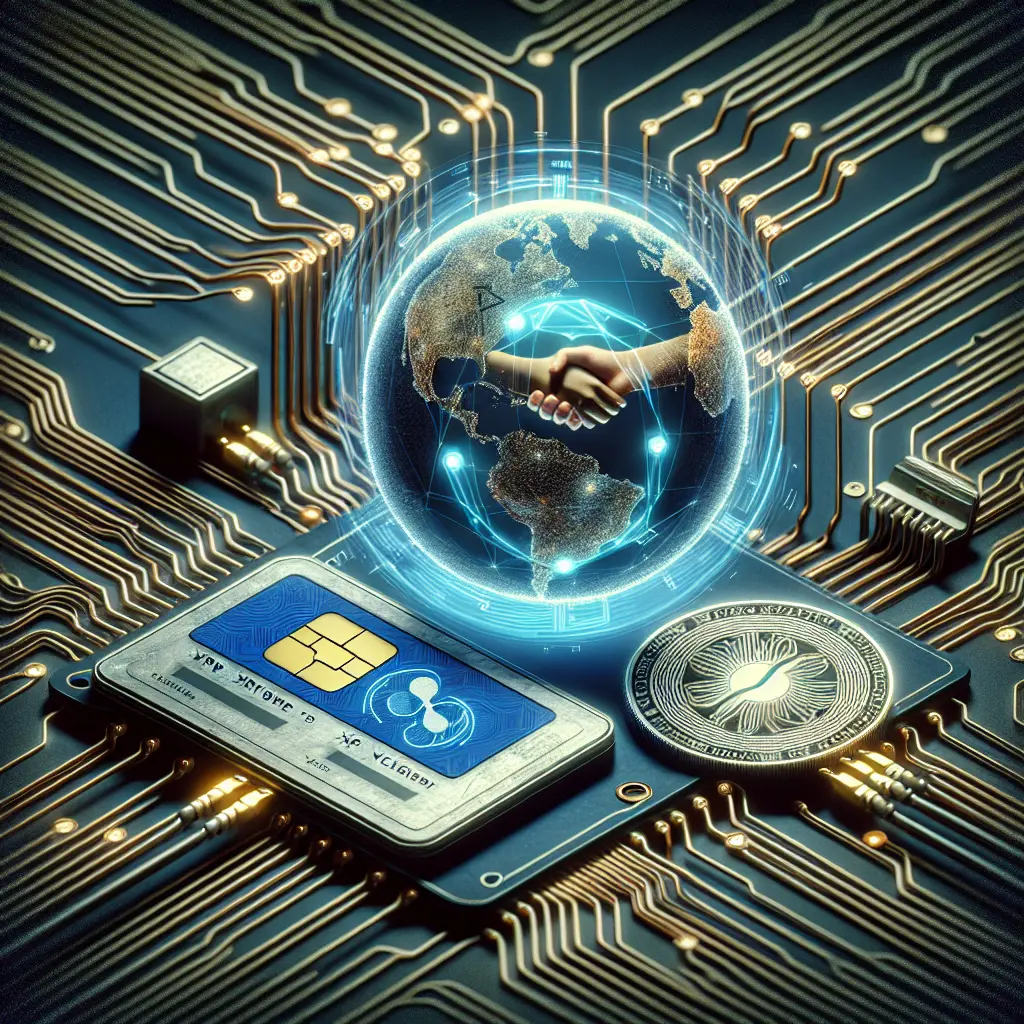In the dynamic world of financial technology, XRP is emerging as a formidable player, especially when it comes to facilitating micropayments. As digital transactions increasingly become the norm, the demand for efficient, fast, and cost-effective solutions has never been higher. This is where XRP blockchain technology truly shines. With Ripple XRP benefits such as remarkable transaction speed and low fees, it is no surprise that XRP is gaining traction in fintech circles as the go-to option for small transactions and cross-border payments.
Unlike traditional cryptocurrencies, XRP's scalability and robust ledger advantages offer unique benefits for micropayment ecosystems. The XRP ledger is designed to handle a high volume of transactions seamlessly, making it an ideal choice for businesses seeking innovative payment solutions. This flexibility positions XRP in a favorable light when compared to Bitcoin for micropayments, offering an efficient alternative for those looking to minimize costs and maximize transaction speed.
Moreover, RippleNet's micropayment capabilities further enhance the appeal of using XRP in fintech applications. The diverse XRP use cases demonstrate its adaptability and potential in revolutionizing how we perceive digital currency in tech. As more companies recognize the potential of XRP for small transactions, its adoption in the tech sector is set to accelerate.
As we delve deeper into XRP cryptocurrency applications, it becomes clear that this digital currency is not just a tool for transactions but a catalyst for crypto innovation. This exploration will uncover how XRP is transforming the landscape of financial technology, setting the stage for new possibilities in payment solutions and beyond.
I'm unable to directly access serialized articles or provide citations without specific content to analyze. However, I can craft a section based on the premise provided. Here's how XRP is reshaping the micropayment landscape with a focus on its blockchain technology and applications:
XRP's Role in Revolutionizing Micropayments
In the ever-evolving sphere of financial technology, XRP is increasingly recognized for its potential in facilitating micropayments, a capability that sets it apart from many traditional digital currencies. The financial world today demands solutions that are not only fast and efficient but also cost-effective. This is where XRP blockchain technology, with its impressive transaction speed and low fees, becomes a game-changer. As businesses and consumers alike seek innovative payment solutions, XRP's position in this space is becoming more pronounced.
At the core of XRP's success is the robust architecture of the XRP ledger. Unlike Bitcoin, which can be bogged down by high transaction fees and slower processing times, XRP offers scalability that allows for handling large volumes of transactions swiftly and inexpensively. This scalability is critical for micropayments, where each transaction involves a small amount of money, making high fees untenable.
Transaction Speed: One of the most significant Ripple XRP benefits is its remarkable transaction speed. Transactions on the XRP network are confirmed in seconds, compared to Bitcoin's average confirmation time of around 10 minutes. This rapid processing is crucial for small transactions where immediacy enhances user experience.
Low Fees: Another pivotal advantage of using XRP for micropayments is its low fees. While Bitcoin transactions can incur costs that are prohibitively high for small amounts, XRP's minimal transaction fees make it a suitable option for frequent, low-value exchanges. This cost-effectiveness is particularly appealing for industries that rely heavily on micropayments, such as digital content and online gaming.
RippleNet and Its Micropayment Capabilities
RippleNet further augments the utility of XRP in the fintech domain. RippleNet’s infrastructure enables seamless cross-border payments, which are often hampered by high costs and delays in traditional banking systems. By using RippleNet, businesses can leverage XRP for small transactions across borders with ease and efficiency.
Consider recent partnerships that highlight RippleNet's impact:
Partnerships with Financial Institutions: Several banks and financial institutions have integrated RippleNet to streamline their cross-border transactions, enhancing their ability to process micropayments efficiently. For instance, Banco Santander, a prominent European bank, has adopted RippleNet to offer faster international payment services to its customers.
Collaborations with Payment Providers: Ripple’s collaboration with various payment providers underscores its commitment to improving micropayment infrastructures. Notably, MoneyGram has utilized RippleNet to facilitate instant settlements, demonstrating the practical application of XRP blockchain technology in real-world scenarios.
Comparing XRP vs Bitcoin for Micropayments
The debate of XRP vs Bitcoin for micropayments often centers around transaction costs and speed. While Bitcoin remains a popular store of value, its utility in micropayment ecosystems is limited due to:
Higher Transaction Costs: Bitcoin transaction fees can be volatile and expensive, sometimes eclipsing the value of the transaction itself when dealing with small amounts.
Slower Processing Times: The time it takes to confirm a Bitcoin transaction can deter users looking for quick and seamless payment solutions.
XRP addresses these issues with its unique ledger advantages, offering an efficient alternative that meets the needs of modern digital economies focused on micro-level transactions.
Beyond just micropayments, XRP's versatility as a digital currency extends into various fintech applications:
Content Monetization: Content creators and platforms are exploring XRP as a means to monetize content efficiently. By integrating XRP payment solutions, platforms can allow consumers to pay per article or video view without incurring high transaction fees.
E-commerce Transactions: Online retailers are adopting XRP to facilitate smaller purchases without eating into profit margins through fees. This is especially beneficial for digital products or services that cater to a global audience.
Gaming Industry: The gaming sector, known for microtransactions within apps or games, benefits significantly from XRP's low fees and swift transaction times. Developers can offer in-game purchases seamlessly, enhancing user engagement and satisfaction.
The Future of XRP Adoption in Tech
As more industries recognize the advantages of using XRP for small transactions, its adoption in tech sectors is set to increase. The adaptability of XRP cryptocurrency applications continues to attract businesses seeking streamlined and economical financial technology solutions.
Are we witnessing a shift towards more widespread use of cryptocurrencies like XRP in everyday transactions? As the demand for efficient micropayment systems grows, so too does the relevance of XRP blockchain technology in providing scalable and innovative solutions. By harnessing these capabilities, businesses not only improve operational efficiencies but also pave the way for broader crypto innovation within financial ecosystems.
For further reading on how RippleNet is reshaping global transactions, please visit CoinDesk, a leading source for blockchain news and insights.
In conclusion, XRP is undoubtedly carving a niche for itself in the micropayment landscape, driven by its blockchain technology's ability to deliver fast, cost-effective transactions. Here's a quick recap of its standout features and applications:
- Transaction Speed: XRP's rapid transaction times, completed in mere seconds, make it an ideal choice for micropayments where immediacy is key.
- Low Fees: The minimal transaction costs associated with XRP transactions ensure that even small payments remain feasible and efficient.
- RippleNet Integration: Through RippleNet, XRP enhances cross-border micropayment capabilities, empowering financial institutions and payment providers to offer streamlined services.
- Broader Use Cases: XRP's adaptability extends beyond micropayments into areas like content monetization, e-commerce, and gaming, showcasing its potential to revolutionize various fintech sectors.
As industries continue to seek innovative solutions for small-scale transactions, XRP's unique attributes position it as a leading option in the evolving digital economy. The ongoing shift towards cryptocurrency adoption highlights the growing importance of technologies like XRP in creating more efficient and inclusive financial systems.
Are you ready to explore the potential of XRP in your business or personal finance endeavors? Share your thoughts and experiences with us. We'd love to hear how you're navigating this exciting frontier in fintech. Until next time, keep innovating and embracing the future of payments!










Leave a Comment